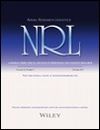DiversiTree: Computing Diverse Sets of Near-Optimal Solutions to Mixed-Integer Optimization Problems
While most methods for solving mixed-integer optimization problems seek a single optimal solution, finding a diverse set of near-optimal solutions can often be more useful. State of the art methods for generating diverse near-optimal solutions usually take a two-phase approach, first finding a set of near-optimal solutions and then finding a diverse subset. In contrast, we present a method of finding a set of diverse solutions by emphasizing diversity within the search for near-optimal solutions. Specifically, within a branch-and-bound framework, we investigate parameterized node selection rules that explicitly consider diversity. Our results indicate that our approach significantly increases diversity of the final solution set. When compared with existing methods for finding diverse near-optimal sets, our method runs with similar run-time as regular node selection methods and gives a diversity improvement of up to 140%. In contrast, popular node selection rules such as best-first search gives an improvement of no more than 40%. Further, we find that our method is most effective when diversity is emphasized more in node selection when deeper in the tree and when the solution set has grown large enough.





